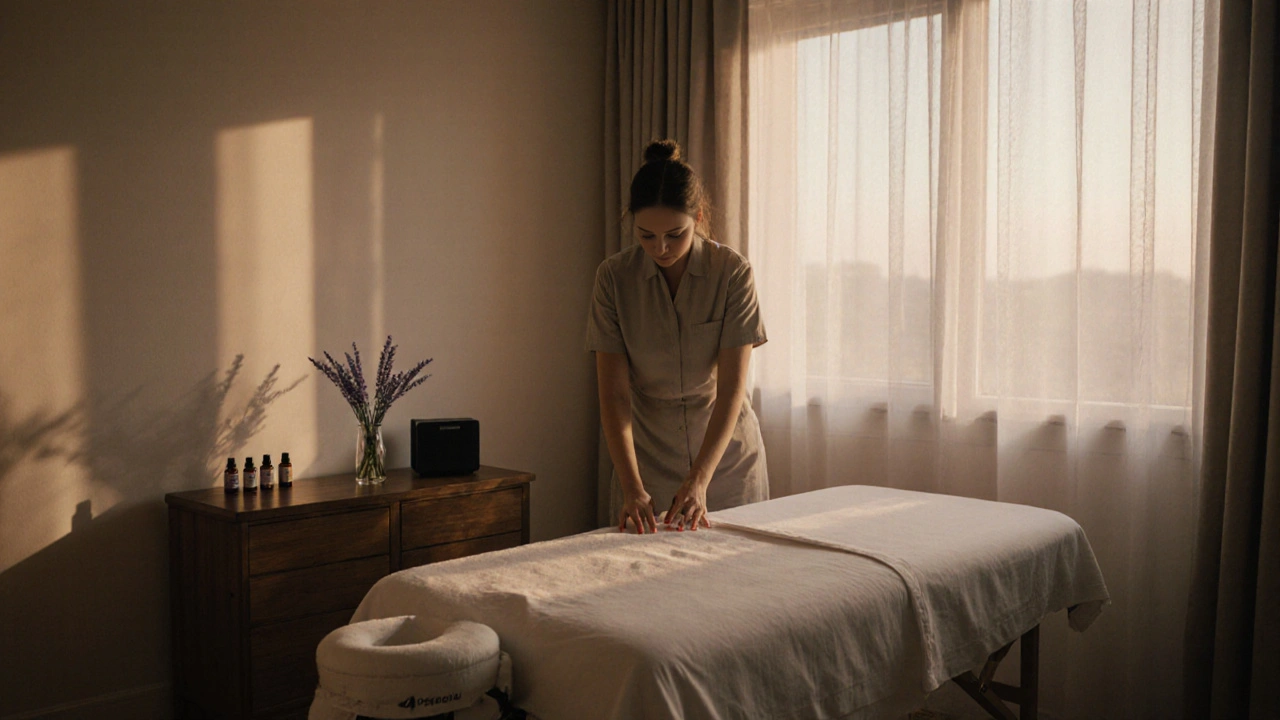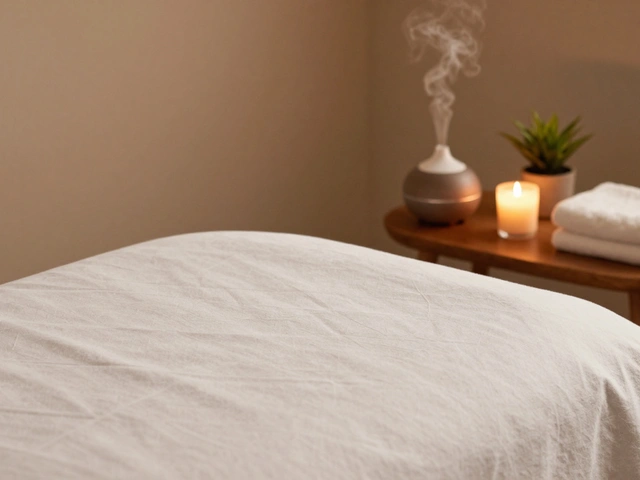At-Home Massage: Quick Tips for Relaxation and Wellness
If you’ve ever wished a spa could come to your living room, you’re in the right place. An at-home massage doesn’t need fancy equipment or a professional’s schedule. All you need are a few basics, a little space, and a willingness to unwind. In the next few minutes you’ll learn how to set up, what techniques work best, and why this simple habit can boost your mood and muscles.
Why try an at-home massage?
First, it saves money. A single spa session can cost as much as a night out, while a DIY massage costs only a bottle of oil and a little time. Second, you control the pressure, speed, and areas you focus on – perfect for tight spots that a therapist might miss. Third, regular self‑massage improves circulation, eases tension, and can even help with sleep. It’s a tiny habit with big returns.
Simple steps to give yourself a great massage
1. Pick the right spot. Choose a quiet room, lay a soft towel or yoga mat on the floor, and dim the lights. A calm environment tells your body it’s time to relax.
2. Gather your tools. A small bottle of massage oil (or even coconut oil) makes the glide smoother. If you have a foam roller or a tennis ball, keep them handy for deeper work.
3. Warm up. Spend two minutes doing gentle neck rolls, shoulder shrugs, and ankle circles. Warm muscles respond better to pressure.
4. Start with big muscles. Use both hands to knead your shoulders, upper back, and thighs. Apply pressure in slow circles, moving from the center outwards. If a spot feels especially tight, hold a gentle press for 10‑15 seconds before releasing.
5. Target trouble spots. For the neck, slide your fingertips along the base of the skull, then gently press the sides of the spine. For the calves, use a tennis ball against a wall – roll slowly, stop where it hurts, and breathe.
6. Finish with light strokes. After you’ve worked the tight areas, glide your hands lightly over the whole body. This signals your nervous system that the session is ending and helps the muscles settle.
Practice this routine a few times a week and notice how your shoulders feel lighter and your sleep improves. You don’t need to be an expert; consistency beats perfection.
Want extra benefits? Try adding a warm compress before you start, or play soft music to keep the mood calming. Even a five‑minute session can be enough after a long day.
Remember, the goal isn’t to become a professional therapist. It’s simply to give yourself a quick break from tension, boost circulation, and feel a bit more in control of your body. Keep the routine simple, stay consistent, and enjoy the calm that comes with a regular at‑home massage.
Why More People Are Choosing Outcall Massage Services
More people are choosing outcall massage services because they offer unmatched convenience, privacy, and comfort. Learn how this growing trend helps reduce stress, improve mobility, and fit self-care into busy lives.
Read MoreOutcall Massage and Its Crucial Role in Pain Management
Outcall massage isn't just about relaxation—it's transforming how people tackle pain management. This article unpacks why more folks are swapping trips to the clinic for a massage right at home. You'll get insider tips about how outcall massage works, who benefits most, and what makes it different from a spa session. We'll also bust some myths and share practical advice on getting the most from an at-home treatment. Whether you're battling chronic pain or just want smarter self-care, here's the info you need.
Read More






